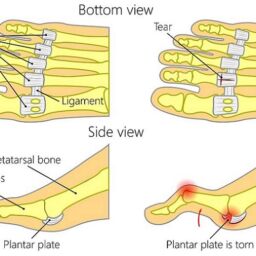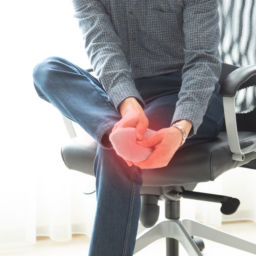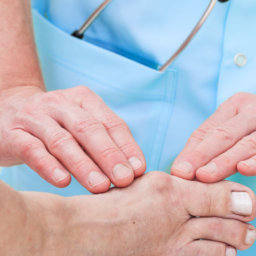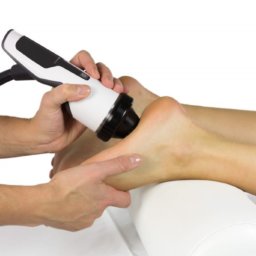
One of the most common causes of pain in the heel of the foot is plantar fasciitis (Plan-tur Fas-e-I-tis). The plantar fascia is a thick band of tissues that is located on the bottom of the foot, connecting the heel bone to the toes. When this band of tissues becomes irritated and inflamed it is known as the plantar fasciitis. Which is why we want to talk about plantar fasciitis treatment options which everyone should consider.
Most people experience a sharp stabbing pain in the bottom of the foot as a result of plantar fasciitis. This pain can often occur during the first steps of the day and usually dissipates as you walk around more. It can also occur after long periods of standing or sitting.
Plantar fasciitis is more common in runners or people who engage in strenuous aerobic activity. People who are overweight, as well as those who might wear shoes without adequate support, can also experience the pain associated with plantar fasciitis.
Fortunately, more than 90% of patients find relief of plantar fasciitis with nonsurgical treatments. However, plantar fasciitis treatment options may take weeks to months before complete relief is obtained so be patient and stick with it.
Here are the 10 most common plantar fasciitis treatment Options:
- Rest – The first step you should take in relieving symptoms associated with plantar fasciitis is stopping the activities that may have caused the injury. Resting and taking a few days off from physical activity may be just the key to reducing inflammation and pain.
- Icing the foot – Icing the affected foot will help temporarily reduce some of the symptoms as well. It can be especially helpful during sudden or extreme instances of symptoms.
- Stretching – Specific stretches and exercises can also help alleviate symptoms. Ask your podiatrist for some recommended movements that will help promote healing and pain relief while strengthening the plantar fascia.
- Massage – Massaging the arch of the foot where the plantar fascia is located is often a relaxing and easy way to reduce pain.
- Shoe Inserts – Recommended shoe inserts can be a great benefit to helping the healing process while promoting pain relief. Shoes often lack the proper support for your specific foot shape and a custom insert can be a great benefit.
- Night Splints – Night splints help to keep the foot stretched out during the night. This prevents the foot from contracting, helping reduce symptoms of the condition.
- Anti-Inflammatory Medications – Anti-inflammatory medications reduce inflammation in the body. This is an easy treatment for temporary relief of symptoms.
- Cortisone Injections – If the pain is not being alleviated by the above treatments, another option to consider is cortisone injections. Cortisone injections can help decrease inflammation. Your podiatrist can determine if you are a good candidate for this treatment method.
- PRP (Platelet-rich plasma) Injections – This method involves injections of the patient’s own concentrated blood platelets to the affected area. These injections are done to stimulate the body to heal more quickly.
- Surgery – It is rare that a patient will need to undergo surgery for this condition, but if all other measures have been taken with no success, it may become a possible option to relieve the symptoms. Your podiatrist can discuss available procedures to determine which would be the best for your condition.
If you’re suffering from pain in the arch of your foot, don’t hesitate to make an appointment with one of our board-certified podiatrists. We have locations from Ft. Lauderdale to Palm City to serve you, as well as FREE transportation for existing patients to or from appointments, same day appointments and emergency services. 1-855-550-FEET



